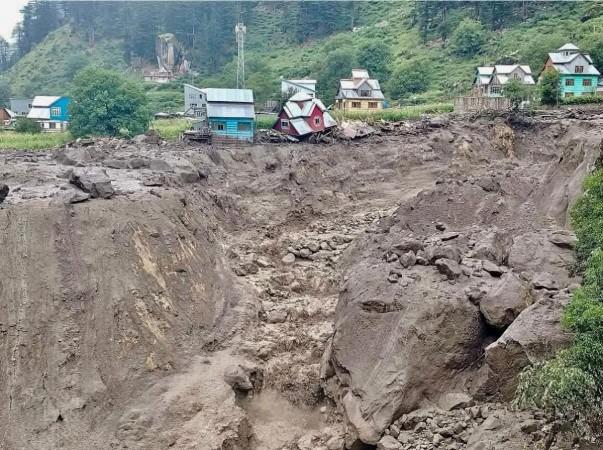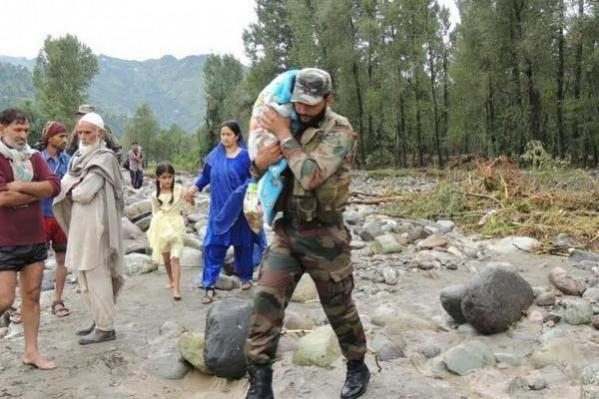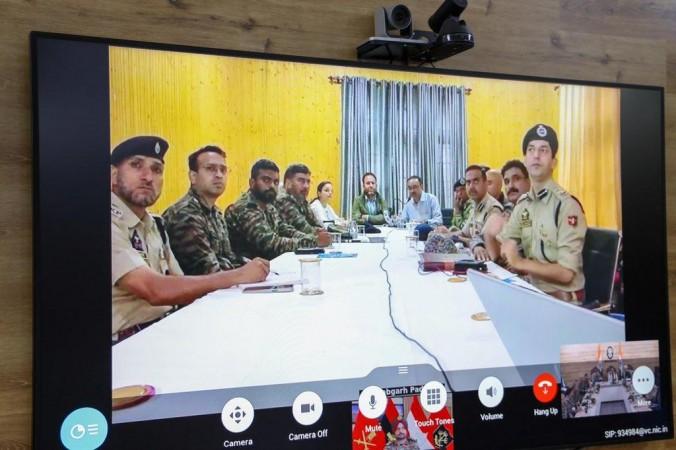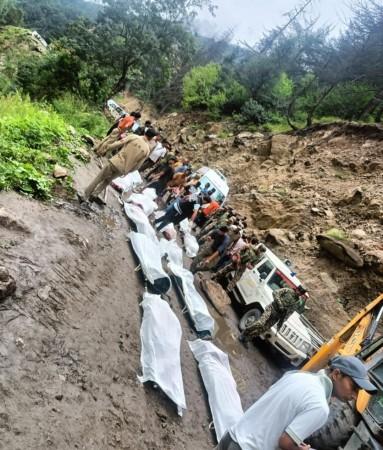
Choshiti village, located in the remote area of Kishtwar district in Jammu and Kashmir, has still not recovered from the devastating disaster that struck on August 14. The destruction caused by a sudden cloudburst that day left the small village in a state of shock.
Although the administration has completed relief and rescue operations, the villagers continue to live in fear, helplessness, and anxiety about the future. "Sixteen houses were completely and three partially damaged in the devastating cloudburst, followed by a horrific flash flood on August 14," Tehsildar Machail Vijay Gupta, under whose jurisdiction this village falls, told International Business Times.
He added that compensation has already been provided to those whose houses were damaged. "Bodies of eleven inhabitants of Choshiti village were also recovered during the rescue operation, while four persons are still missing," he said.
The devastating impact of the cloudburst on this small village can be understood from the fact that as many as 95 kanals of agricultural land were washed away due to the flash flood. "Compensation to the affected farmers has already been disbursed as per the rules, and efforts are underway to properly rehabilitate the affected families," Gupta said.
He also admitted that the tragedy has left a deep psychological impact on the inhabitants. "Schools in this village have been reopened, but it will take some time to normalize the situation due to the psychological trauma," Gupta added.

Choshiti village is the last motorable road link to the Machhil Mata Yatra. This region, surrounded by mountain peaks, has always struggled with difficult geographical conditions, but this disaster has completely altered the lives of its residents.
Many families lost their loved ones, and while some homes were completely destroyed, many families are still living in temporary shelters. Though relief supplies, medicines, temporary shelter, and other essential assistance were provided, these efforts have not alleviated the insecurity and fear among the villagers. Many sit with photographs of their lost loved ones, lost in memories. Village elders say the disaster has not only caused economic damage but also left everyone mentally shattered.

Villagers expressed that they need more than temporary relief—they need permanent rehabilitation, psychological counseling, employment opportunities, and programs that ensure their children's education.
The administration says that reconstruction work is underway. A list of affected families is being compiled, and financial assistance and housing will be provided.

As evening falls, a deep silence descends upon the village. There is no laughter of children, and no activity in the courtyards. People speak softly, as if afraid to voice their grief. Many women weep, holding photographs of their loved ones, while confusion and despair are visible in the eyes of the young. The tragedy of Choshiti village is not just a natural disaster but a harsh lesson in human resilience, loss, and the arduous process of rebuilding.
The greatest challenge for the residents now is to reconstruct their shattered world—a world where they can find not just relief but dignity, security, and hope for the future. After the disaster, the villagers are not only struggling to survive but also trying to preserve their existence, their dreams, and their identity. Choshiti still awaits reconstruction, trust, and a new dawn that brings a ray of hope into their lives.

















